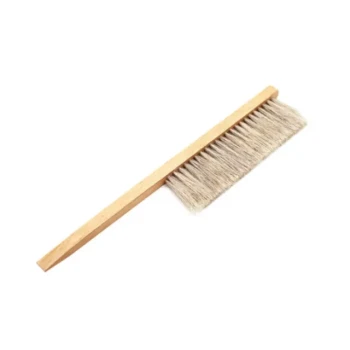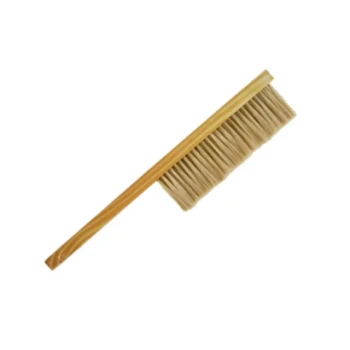Ultimately, the lifespan of a bee suit is determined by its quality and your care regimen. With proper maintenance, a high-quality bee suit used by a hobbyist can easily last for five to ten years, or even longer. However, frequency of use, material type, and how you wash and store it are the most significant factors influencing its durability.
The question isn't just how long a suit can last, but what you must do to achieve that longevity. A bee suit is a piece of safety equipment where failure is not an option, and its lifespan is a direct reflection of material quality and meticulous care.

The Core Factors That Determine a Bee Suit's Lifespan
A bee suit's longevity is not a single number but a variable outcome based on several key elements. Understanding these will help you manage your investment.
Material Quality and Construction
The fabric is the foundation of the suit. Cotton is a traditional, durable material but can be heavy, hot, and prone to staining.
Poly-cotton blends offer a good balance, providing durability while being lighter and more resistant to shrinkage than 100% cotton.
Ventilated suits, which feature layers of mesh, provide superior comfort in hot climates. While the outer layers are tough, the inner mesh can be more delicate and susceptible to snags if not handled carefully.
Frequency and Intensity of Use
A commercial beekeeper who wears their suit daily will naturally see more wear than a hobbyist who performs hive inspections a dozen times a year.
Working in apiaries with lots of thorns, rough surfaces, or excessive propolis will degrade a suit much faster than working in a manicured yard.
Maintenance and Care Routine
This is the single most important factor you control. A suit that is not cleaned regularly accumulates alarm pheromones, which can attract more defensive bee behavior on subsequent inspections.
Improper washing (hot water) or drying (machine dryer) can shrink fabrics, damage elastic seals at the wrists and ankles, and ruin the veil.
Understanding the Trade-offs: Cost vs. Longevity
The price of a bee suit often correlates directly with its expected lifespan and the quality of its components.
The Entry-Level Suit
An inexpensive suit is appealing for a beginner, but it often comes with compromises. These may include thinner material, single-stitching on seams, and less robust zippers. With light use and great care, it might last a few seasons.
The Professional-Grade Suit
A premium suit is a significant investment. For that price, you get thicker, multi-layered fabric, heavy-duty zippers, reinforced knee pads, and double or triple stitching. These are built to withstand daily use and can last for many years.
The Most Common Points of Failure
Regardless of fabric quality, the zippers and the veil are often the first components to fail. Zippers can get clogged with wax and propolis or break under strain.
The fine mesh of the veil is the suit's most critical safety feature but also its most delicate part. A small tear or hole in the veil renders the entire suit unsafe to use.
How to Maximize Your Suit's Lifespan
Diligent care is not optional; it is essential for both safety and longevity.
Proper Washing Technique
Always detach the veil before washing if possible. Wash the suit in cold water on a gentle cycle to prevent shrinkage and damage.
For heavy buildup of wax and propolis, you may need to pre-soak the suit or scrape off the deposits before washing.
The Importance of Air Drying
Never put your bee suit or veil in a machine dryer. The high heat will degrade the fabric, destroy the elastic cuffs, and can melt or warp the veil mesh, creating dangerous gaps.
Always hang your suit to air dry, preferably in a shady, well-ventilated area away from direct sunlight.
Correct Storage
Once completely dry, store your suit by hanging it in a closet or enclosed container. This protects it from dust, pests, and accidental damage.
Leaving it in a crumpled pile can create permanent creases and put stress on the zippers and seams. Storing it in direct sunlight will cause the fabric to become brittle over time.
Making the Right Choice for Your Goal
Select a suit based on your beekeeping intensity and commitment to its care.
- If your primary focus is starting a new hobby: A mid-range poly-cotton suit offers the best balance of cost and durability, and with proper care, it can serve you well for many years.
- If your primary focus is frequent or commercial use: Investing in a professional-grade ventilated suit with heavy-duty zippers will provide superior comfort and a much longer working life, making it a better value over time.
- If your primary focus is maximizing any suit's life: Meticulous cleaning after every few uses, air-drying without fail, and proper storage are the keys to longevity.
Ultimately, a bee suit's lifespan is a direct result you create through your purchasing decision and your commitment to its care.
Summary Table:
| Factor | Impact on Lifespan | Key Takeaway |
|---|---|---|
| Material Quality | High-quality fabrics (e.g., poly-cotton, ventilated mesh) last significantly longer. | Invest in durable materials for long-term use. |
| Frequency of Use | Daily commercial use shortens lifespan; hobbyist use extends it. | Match the suit's quality to your beekeeping intensity. |
| Maintenance Routine | Proper washing (cold water) and air-drying are critical for longevity. | Meticulous care is non-negotiable for safety and durability. |
Equip your apiary for the long haul with HONESTBEE.
As a trusted supplier for commercial apiaries and beekeeping equipment distributors, we understand that durability and safety are paramount. Our wholesale-focused operations provide professional-grade bee suits built with thick, multi-layered fabrics, heavy-duty zippers, and reinforced stitching to withstand the demands of daily use.
Don't let equipment failure compromise your safety or productivity. Contact our team today to discuss your needs and discover how our durable beekeeping supplies can protect your investment and your bees for seasons to come.
Visual Guide

Related Products
- Cotton Beekeeping Suit and Round Hat with Veil Bee Keeper Protective Gear
- White Beekeeping Protective Suit and Hat with Fencing Veil for Beekeepers
- Professional Beekeeping Suit for Kids and Girls Childrens Bee Keeper Suit
- Heavy Duty Cowboy Beekeeper Hat with Visibility Veil Outdoor Professional Beekeeping Protective Gear
- Beekeeper Cowboy Hat and Veil for Beekeeping
People Also Ask
- What are bee suits made of? Choosing the Right Material for Maximum Protection & Comfort
- Why is a jacket with a hat veil recommended for beekeepers? Essential Protection for Your Face and Neck
- Do beekeeping suits completely prevent stings? Maximize Your Apiary Safety with the Right Gear
- What factors should be considered when choosing a beekeeping suit? Balance Safety, Comfort & Performance
- How should a bee suit be cleaned? Protect Your Investment and Ensure Apiary Safety



















